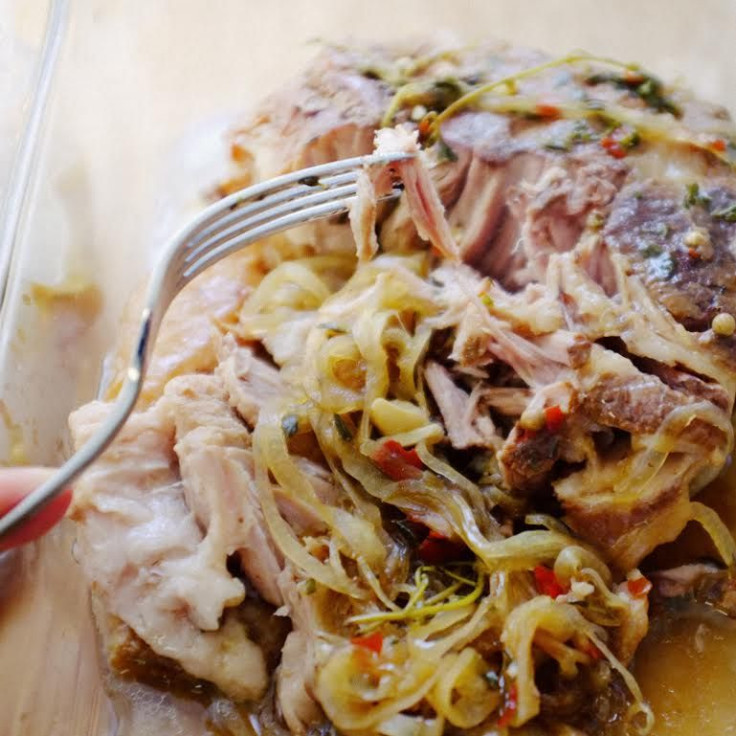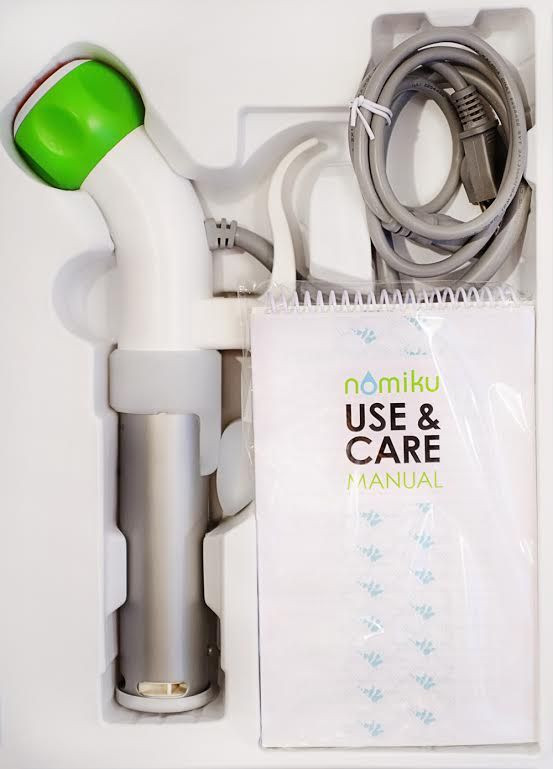
Let’s talk about Latin food for a minute. For most Americans (read: gringos), this phrase either evokes anything that can be force-fed into the floury mouth of a tortilla or an accidental trip down a supermarket aisle full of canned, watery beans.
But Latinos in the United States know the truth about their cuisine: Not every foodstuff comes stamped with Goya’s seal of quality assurance, and it’s certainly not all tacos and burritos.
In fact, because Latin cuisine varies so much from region-to-region, it’s possible that even talking about Latin food as a culinary whole flattens out key nuances between national dishes into oblivion.
But for our purposes, there is one underlying truth about traditional Latin cooking that unifies the Dominicana mashing plantains for her mofongo with the Mexicano fussing over whether his maize flour boasts the best possible nixtamalization. It’s time-intensive, labor-intensive, and highly technical -- if ultimately very forgiving.
And contrary to the stereotype, Latinos actually lead very busy lives. If you don’t believe us, just check out which country boasts the busiest work schedule in the world.
So if you’re Latino and you’re juggling the stress of working a demanding full-time job with the pressure of providing as a head of household, when the heck are you supposed to put the time aside required to cook your food the best way possible?
The answer: one very traditional way of cooking traditional foods that yields mind-blowingly delicious results.
It’s called sous vide, and though it’s a French-ish technique, there’s a lot that people who want to cook Latin foods can learn from it.
If you don’t know what sous vide is, you’re not alone. It’s a 99 percent fool-proof way of producing perfectly cooked dishes with minimal effort through precise low-temperature cooking in a “water oven.”
But if you did know what sous vide was before that very cursory explanation, chances are it’s eluded your kitchen’s grasp because of how much the equipment costs, and then how much space a giant water oven will take up in your already crowded cooking quarters.
While a reliable and incredibly low-cost method does exist for cooking sous vide does exist, it can’t produce heat high enough to cook certain foods, like vegetables. And you know how much we love our vegetables.
If you want to be able to cook anything sous vide, you’ll want to invest an immersion circulator.
LatinTimes spoke to Lisa Fetterman, the inventor of the Nomiku, which is the first and, in my opinion, the best sous vide contraption on the market. Here’s what she had to say about how one device, and the cooking technique it has, unlocked for thousands of home cooks, could change the face of Latin cooking.
(And if you’re just looking for the sous vide pulled pork arepa recipe, scroll down to the bottom of the article for one reprinted, with permission, from Nomiku's blog.)

LatinTimes’ Anthony Smith: I interviewed you once before back when your project was still a wee Kickstarter. That was two years ago. Where would you say you are now on your Nomiku journey?
Nomiku’s Lisa Fetterman: We're now operating as a startup which is really rewarding. It's great to wake up and learn something new everyday and create what we want see in the world.
LT: For those of our readers who are uninitiated: What is sous vide?
LF: Sous vide means "under vacuum" in French, traditionally one vacuum seals their ingredients in a plastic bag and then puts it in a temperature controlled water bath. However, the real magic of this method comes from cooking your ingredients slow and low. With sous vide, we can use exact heat to the very degree necessary to make food taste perfect and other-worldy. It's been the domain of elite chefs around the world for a very long time, but really it's quite simple and homecooks can just use a zip bag at home to cook this way with the Nomiku.
LT: A lot of ink has been spilled comparing the three big sous vide home cooking machines (Nomiku, Sansaire, Anova), and maybe the most famous article about it concluded that the race was a dead tie. In your opinion, what gives Nomiku the edge over the competitors? http://www.seriouseats.com/
LF: I really appreciate how hard it is to put out a product in the world, it's a pleasure to not be alone in the sous vide effort and actually have competitors. I believe we grow the pie together.
We can talk about features, Nomiku is the lightest at 2.5lbs, most powerful at 1150Ws, our heater never burns out, and it's the safest with its power-switching separate from the body which goes over the water. But really what differentiates us is our experience and community. When you're buying a drill you essentially want to buy the hole in the wall. When you buy a Nom you want the best dishes possible to create and share--- we support that. We churn out easy to use recipes weekly and have a gorgeous primer that comes with our machine. Our warranty program is very white gloves, we attend to everyone usually within 12 hours. Nomiku is about giving the best cooking experience we can and it goes far beyond hardware but is reflected in our design. You can find us actively engaging on Instagram, Facebook, Twitter, Pinterest, and Tumblr, sous vide is a new method of cooking and that comes with a lot of questions from curious cooks and we are at your service.
LT: Full disclosure: I have one, and I absolutely love it. Are you ever planning on issuing a Nomiku 2.0? If so, what features would you add? What would you change?
LF: Anthony, that's wonderful, thank you! We do have a few projects in the works. Everything coming out will center around our long term goal which is "the connected cook". We don't care about the "connected kitchen/internet of things", that is just gimmicky and doesn't contribute to making food tasting its absolute best. Our focus is to facilitate the natural experience of cooking well and making it so easy to do you'll have confidence to unleash a bold creativity that is inside you to create amazing meals. It could mean an app, it could mean our appliances are designed to just disappear and get out of the way. We want to change the kitchen through connecting people who cook.
LT: How can Nomiku change the way Latin home cooks prepare food?
LF: Latin food has so many unique and beautiful flavors. It would be a shame to have those seasoning taste dull on something poorly cooked. Sous vide can make sure that your ingredients are perfect so you can focus on being creative.
LT: What would be on your Latin sous vide home cooking menu?
LF: We do these amazing arepas for office parties. We make the arepas on the stove or in the oven and then serve them with 48 hour sous vide pulled pork. The pork can be done way beforehand which is truly a lifesaver when you're hosting a party. Key sous vide proteins and veggies are easily adaptable for many flavor combinations.
LT: Thanks so much for your time, Lisa!
LF: Gracias!
And, as promised, here is the recipe for the sous vide pulled pork. It only requires ten minutes of work (but a hefty cooking time spent just leaving it alone), so start it at night, before you go to bed, and it’ll be done by the time you leave work the next day.
Cook time: 18 hours sous vide, 10 minutes to assemble
Makes about 25 tacos, arepas, or hungry-person handfuls
Ingredients:
For pulled pork:
3 pound pork shoulder
1/2 teaspoon cumin seeds
1/4 teaspoon whole allspice
1/2 teaspoon black peppercorns
2 tablespoons achiote (annatto) seeds
6 large garlic cloves, coarsely chopped
1 teaspoon dried oregano (preferably Mexican), crumbled
1/3 cup fresh orange juice
1/4 cup apple cider vinegar
1 1/2 teaspoons salt
2 tablespoons of butter or fat of your choice
For sweet pickled onions:
1/2 large red onion - thinly sliced on mandolin
4 Tbsp sugar
1/4 cup apple cider vinegar
2 Tbsp salt
Steps to make pickled onions:
1. Place thinly sliced red onions in a bowl and cover with the salt and fill bowl with water. Let sit for 5 minutes. Strain.
2. Put sugar and apple cider vinegar in bowl. Mix. Cover and put in fridge. Can be held for two days in the fridge.
Steps to make pulled pork:
1. Set Nomiku water bath to 80°C. Put pork shoulder in a bag with cumin, allspice, peppercorns, annatto seeds, garlic, oregano, orange juice, fat, vinegar, and salt. Vacuum seal and toss in water bath for 18 hours. Salt can be added for long cooks with pork because it has better water retention.
2. Pull apart the meat. Add more salt and pepper to taste.
3. Put the meat on tortillas and top with onions. Add salsa, cheese, and sour cream if desired!
© 2025 Latin Times. All rights reserved. Do not reproduce without permission.




